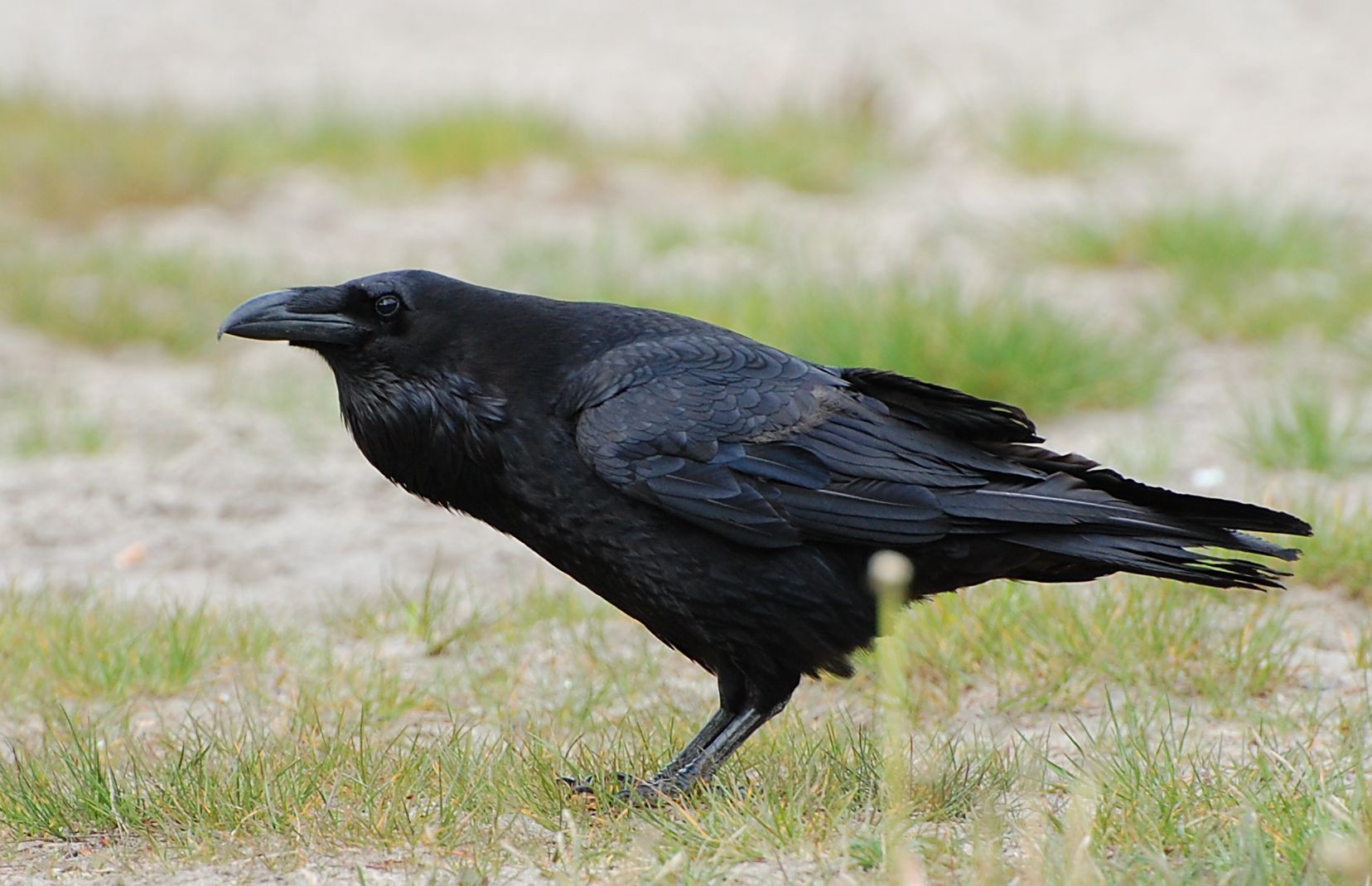This short video, by the Cornell Lab of O, discusses the differences between and potential meanings of the sounds made by crows and ravens
by GrrlScientist for The Guardian | @GrrlScientist
 Adult common raven (Corvus corax) in Berlin, Germany. (Credit: R. Altenkamp/CC BY-SA 3.0.)
Adult common raven (Corvus corax) in Berlin, Germany. (Credit: R. Altenkamp/CC BY-SA 3.0.)
Since today is ?Caturday? ? that wonderful day when the blogosphere traditionally takes a breather from hell-raising to celebrate pets ? I thought I?d share a little video peek at some of my favourite animals: corvids. I ran across this lovely video created by Cornell University?s Laboratory of Ornithology (more fondly referred to as the ?Lab of O?) that discusses the differences between and potential meanings of the sounds made by crows and ravens.
If you watch birds, even casually, you might be confused by trying to distinguish these two large black corvid species. However, both species are quite chatty, and these birds? voices provide important identifying information. In this video, narrated by Lab of O ornithologist, Kevin McGowan, you?ll learn how to distinguish crows and ravens on the basis of their voices alone.
Both crows and ravens make loud raspy signature calls, described as caw and kraa respectively, but American crows and common ravens have large repertoires of sounds in addition to these calls. They also can learn to imitate the calls of other birds. As you?ll learn in this video, crows often make a ?rattle? sound along with their territorial caw. They also communicate using a wide variety of other sounds including clicks and bell-like notes. Ravens, on the other hand, produce deep, throaty kraa calls.
You can download a free kit from the Lab of O that teaches you how to distinguish crows and ravens. Cornell?s Lab of O can be found on twitter @CornellBirds.
.. .. .. .. .. .. .. .. .. .. .. .. .. .. .. .. .. .. .. .. .. .. .. .. .. .. .. .. .. .. .. .. .. .. .. .. .. .. .. .. .. .. ..
GrrlScientist is very active on twitter @GrrlScientist and you can follow all her writing by subscribing to her TinyLetter
Originally published at The Guardian on 18 October 2014.


